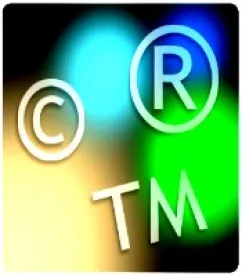The title says it all. Despite sharing a border, there are many differences between Canadian and United States trademark law that lawyers and trademark owners should be aware of. The most noticeable, though relatively unimportant, is the difference in terminology. While the United States denote their core concepts as “trademark” and “goods”, Canadian legislators settled on the terms “trade-mark” and “wares”. For ease of reference, this article will use “trademark” when referring to both systems.
Similarities
While there are numerous dissimilarities between the two legal systems with respect to trademarks, the commonalities should be explored first. To begin with, both systems are a combination of statute and common law (regarding unregistered trademarks). The importance of priority in registration is also fundamental in both countries. Priority, which is incorporated in the first to file rule, accords primacy to earlier filed applications over subsequent applications, subject to challenges based on prior use.
As Canada and the United States are members of the Paris Convention for the Protection of Industrial Property, the effects of this treaty are shared by registrants in both jurisdictions. This means that domestic registrations by a Canadian or United States applicant can be followed by a filing in the other member jurisdiction within six months by the same applicant. The later application is deemed to have been filed on the same date as the original application. With some exceptions, Canada and the United States also share the requirement that a trademark be in use to maintain a registration. Failure to comply can result in loss of the trademark.
Main Differences
Despite these similarities, differences between the trademark laws of the two nations are significant. The spheres of jurisdictional competence are shaped differently between Canada and the United States. As a result, while trademarks in Canada are strictly the purview of the federal government and thus enforceable throughout the country, in the United States trademarks can be granted at either the state level or the federal level. Note that in order to register federally a trademark must be used or intended to be in use in interstate commerce.
The jurisdictions provide roughly the same bases of trademark registration: intent to use a trademark, prior use of a trademark and existing foreign registration of a trademark. Canadian applicants, however, also can register a trademark on the basis of “made known in Canada”.
Additionally, under the third ground for registration, Canadian law requires that a mark as an existing foreign registration be in use in the foreign jurisdiction rather than simply being registered in that location. There is no such limitation in the United States.United States trademark law also differs from Canada in that goods and services are identified as belonging to various classes. United States applicants must therefore pay a separate filing fee for each class applied for. By contrast, as there is no such differentiation in Canada, a standard filing fee applies regardless as to how the good or service is characterized.
The Protocol Relating to the Madrid Agreement Concerning the International Registration of Marks is another difference between the two jurisdictions as the United States is a member and Canada is not. This international agreement provides for streamlined foreign trademark registrations in member countries and, as a result, foreign registration for United States trademark applicants is cheaper and easier than it is for their Canadian counterparts.
The dissimilarities extend to the realm of licensing. Subject to certain requirements, in the United States a trademark can be used by corporate parents or subsidiaries as of right (note that this does not include other forms of affiliated companies) without a licensing agreement. Canadian law requires a license agreement between such entities as, absent such an agreement, the trademark holder runs the risk of failing to maintain use of the trademark. Though the agreement need not be written, a license agreement should be reduced to writing and contain terms required by Canadian Trademark law such as the requisite level of control.
Evidence of use is not required for registration or renewal of a Canadian trademark. Conversely, United States trademark law requires the applicant or registrant to submit evidence of use at the time of registration, in the fifth year after registration of the trademark and at the time of renewal.
Procedural variations also exist. While trademark applications in both jurisdictions are subject to an opposition period in which the claim to a trademark in an application can be disputed, the length of time differs. In Canada, the opposition period lasts for two months following publication, while in the United States applicants need only wait thirty days following publication. The result of a successful application also varies between the two nations. In Canada, a trademark owner is awarded a trademark for a period of fifteen years before renewal is required. In the United States this period is only ten years.
Other Differences
There are many other differences between the two laws of the two countries. For instance, the United States allows filed trademark applications to be subsequently divided between intended use goods and prior use goods. This arises where one element of the application will be delayed. No similar ability exists in Canada.In the United States trademark applicants can register certain marks that would not be capable of registration under the Principal Register, such as descriptive trademarks or surnames, on the Supplemental Register. This affords less protection but is completely unavailable to such trademarks in Canada.
In the United States failure to use the registered trademark symbol ® will prevent a trademark owner from collecting damages unless the infringer otherwise had notice of the registration. This is not the case in Canada.
Finally, there are minor peculiarities between the systems. Examples include, in Canada, the existence of a special class of trademarks that are reserved for the government and are known as official marks; and in the United States, a differentiation, in some cases, between “service mark” and “trademark” when referring to goods or services.
There are a multitude of difficulties that can be encountered by a trademark applicant or such applicant’s legal counsel when attempting to register or maintain a trademark in the different North America jurisdictions.





 />i
/>i
